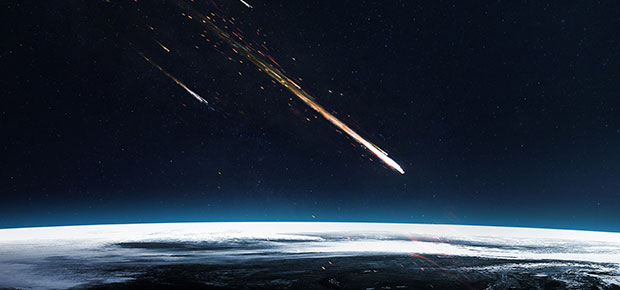 Go to Canterbury Christ CHurch University's website
Go to Canterbury Christ CHurch University's website
 Go to Canterbury Christ CHurch University's website
Go to Canterbury Christ CHurch University's website

What are Meteors?
Secondary | Space | Views: 9762
Fast Facts - What is a meteor?
Meteor Showers
Usually, just a few meteors are visible over the course of an hour, but sometimes the sky is filled with lights that look like heavenly fireworks. These meteor showers occur when the Earth passes through the orbit of a comet. Watch a meteor shower in the Meteor Showers 101 video from The National Geographic using the link at the bottom of the page
See the Perseid meteor shower between mid July and Mid August 2024
The Perseid meteor shower reaches it's peak on the 12th August.
Find out more about this phenomenon including tips on how to get the best view from the Natural History Museums website here.
If you've missed it don't worry there's plenty more!
Meteor showers to look out for in 2024
The Delta Aquariids: due to peak 30 July - up to 25 meteors per hour, possible trail of comet 96P/Machholz.
The Perseids: due to peak 12-13 August - 100 meteors per hour from the trail of comet 109P/Swift-Tuttle.
The Draconids: due to peak 8-9 October - under 10 meteors per hour- from trail of comet 21P/Giacobini-Zinner.
The Orionids: due to peak 21-22 October - up to 25 meteors per hour from trail of the comet 1P/Halley. (Halley’s comet)
The Southern Taurids : due to peak 10-11th October- possible 5 per hour, very slow meteors
The Northern Taurids: due to peak 12-13 November - possible five meteors per hour from the trails of comet 2P/Encke or associated objects.
The Leonids: due to peak 17-18 November - with 10 meteors per hour from the trail of the comet 55P/Tempel-Tuttle.
The Geminids: due to peak 14-15 December - more than 100 meteors per hour from the trail of the asteroid 3200 Phaethon (NB. although it is officially classified as an asteroid, it produces a tail like a comet.)
The Ursids: due to peak on 22-23 December - usually produces fewer than 10 meteors per hour from the trail of the comet 8P/Tuttle.